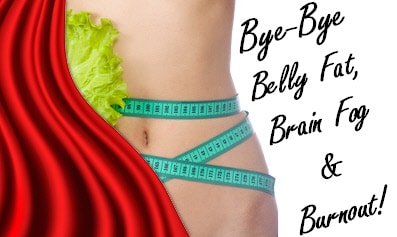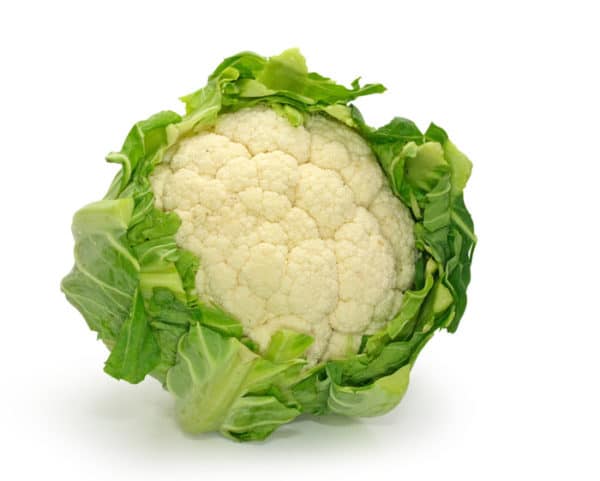
I’ve written a number of articles about the pros and cons of frequent small meals as compared to the 3 meal a day or less plan.
Hypoglycemia and the Myth of Eating Frequent Small Meals was recently published on the Vegetarian Health Institute Blog.
Every time I publish an article like The Great Meal Timing Debate! or Why Eating Small , Frequent Meals May be Damaging to Your Health there are many objections made by well meaning people who haven’t studied the science. They are going by popular press recommendations to eat frequently to avoid blood sugar swings.
Metabolism Boosting Blunder: Why Eating Smaller, Frequent Meals May Make You Fat generated a stir as well.
The purpose of today’s article is to share the science behind the recommendation to eat less frequently. I explore the biochemical pathways that regulate blood sugar balance and the dance of the hormones that keep things in check.
Insulin is a hormone secreted by your pancreas in response to eating. It doesn’t much matter what you eat; insulin will be secreted. The composition of your meal determines just how much insulin is secreted. The more carbohydrates in the meal, the more insulin that’s required to keep your blood sugar regulated.
Here’s what supposed to happen, in a perfectly balanced body:
- You eat, insulin levels rise, and glucose is moved into your cells to be burned for energy.
- Excess glucose is converted to glycogen and stored in your liver
- Insulin triggers leptin levels to rise (leptin is the hormone your fat cells secrete after a meal) which signals the brain to turn off your appetite and tells your pancreas to stop making insulin.)
- Growth hormone is released. Growth hormone, in the early post meal stages, triggers the buildup of muscle protein, which is enhanced by the presence of insulin.
- About three hours later, glucose levels return to normal and insulin should be back down to where it was before your meal.
- Blood sugar levels begin to drop, triggering the release of glycogen by your pancreas, which triggers your liver to kick into high gear, mobilizing glycogen into blood sugar.
- You begin to burn fats that are in your blood for energy, thus putting to good use fats that would otherwise go into storage, as unwanted fat!
- More than four hours after eating, growth hormone begins to mobilize fat for fuel. However, this only happens when insulin levels are very low.
- If your blood sugar begins to drop too much, glucagon is secreted to mobilize stored calories and all is well until your next meal.
Typically, insulin levels peak at around 30 minutes after you eat and return to normal at about 3 hours. Then leptin gets to go to work and triggers fat burning.
In the ideal situation, insulin sends 60% of the fuel in a meal to the liver for “quick access” storage as glycogen and triggers the uptake of the remaining 40% of the glucose and amino acids into muscle cells and cells of your vital organs, which use the glucose for fuel and the amino acids for growth and repair.
Keeping Blood Sugar Steady Between Meals: Glucagon
The hormone glucagon is in charge of keeping your blood sugar steady between meals. Glucagon signals the liver to turn stored glycogen back into glucose as your sugar levels begin to drop between meals. It also triggers the processes of “gluconeogenesis” and lipolysis which trigger the creation of glucose from stored protein and fat. Glucagon has some amazing effects on the human body beyond maintaining blood sugar levels and increasing fat burning, including decreasing the production of cholesterol, and increasing the release of extra fluids from the body.
There are enough carbohydrates stored in your liver in the form of glycogen to last 24 hours, unless you are engaging in extreme exercise like marathons or triathlons, so when things are functioning well, there are no blood sugar dips between meals.
Snacking Between Meals: A Dangerous Habit?
Snacking between meals causes insulin to rise again (before it’s returned to normal), suppresses glucagon, and raises leptin levels unnaturally — leading to a condition called leptin resistance wherein the brain and pancreas no longer hear the signal from leptin to turn off appetite and reduce insulin secretion.
Constantly elevated levels of insulin from snacking between meals, deliberately planning meals close together, or eating foods high in sugar and simple carbohydrates, causes hyperinsulinemia, a condition of too much insulin in your blood. This condition leads to insulin resistance as the cells can no longer take in so much sugar and “close their ears” to the insulin signal. As result, more fat storage occurs and you feel tired all the time.
Insulin resistance leads to weight gain, especially around the middle, stiffening of your arteries, elevated blood pressure, systemic inflammation, and eventually to cardiovascular disease like heart attack and stroke.
The period in between meals should be an opportunity for your liver to exercise and clear out glycogen. Eating between means alters powerful hormonal signals, interferes with the mechanism that burns fat as fuel, clogs liver metabolism, and sends calories right to fat stores.
If you consistently snack between meals or eat again too soon after the previous meal, your liver’s exercise routine is blocked. When your liver doesn’t get enough exercise, it can synthesize excessive cholesterol, leading to elevated blood lipids even if the food you eat contains no cholesterol. Fat burning is inhibited and calories are stored rather than burned causing food cravings and low energy.
If your muscles are well toned, they will use up fat between meals much faster than untrained muscles. In fact, muscle tone can provide you with the energy that you need to keep going all day long.
If you consistently eat meals too close together, you’ll also cause your pancreas to fatigue and your hypothalamus and pancreas to become leptin resistant, leading to difficulty shedding excess fat.
Ideal Meal Spacing: 5 or 6 Hours Between Meals!
If all of this is functioning properly, then after a meal there is no need to eat again for 5 or 6 hours because of the balance of hormones that keeps your blood sugar steady. The possible exceptions are people with very high metabolic rate, sometimes called fast oxidizers, marathoners and triathletes and growing children who burn through their fuel much more quickly than the average person.
Eating too often also triggers your liver to produce excess VLDL, the most dangerous form of cholesterol. As a result, snacking between meals causes cholesterol to rise, even more than eating cholesterol rich foods.
In summary, this whole process, becomes a vicious, vitality-sabotaging cycle:
- Eating too often prevents your liver from “exercising” by disrupting the cycle of releasing glycogen from storage between meals and storing it back right after a meal.
- Lack of “exercise” by the liver clogs your liver’s fuel storage system, resulting in fatigue and impaired detoxification mechanisms.
- Eating too frequently can lead to constantly elevated insulin levels, which can lead to insulin resistance which can lead to liver congestion. Remember, ideally, the liver takes 60% of the fuel from each meal and stores it as readily available fuel. When your liver becomes insulin resistant, the calories eaten head directly for fat storage as your liver can no longer accept them without the aid of insulin.
- When your liver gets clogged and develops insulin resistance, it’s hard to go 5-6 hours between meals or to sleep through the night because your liver can no longer produce a steady stream of glucose – it needs to comes from outside.
- When there is insulin resistance in your liver, your liver turns calories into fat at an increased rate, leading to excess weight.
- The constant high levels of insulin due to eating too frequently result in excess leptin and eventually leptin resistance, which further confuses your liver and turns down the production of glucagon, the hormone that keeps your blood sugar steady between meals by stimulating the release of stored fuel.
- To make matters even worse, the lining of your blood vessels and your nerve cells do not become insulin resistant and are subject to the stiffening effect of excess blood sugar and insulin.
- The net result is stiffening of your arteries and hardening of your nerves, leading to cardiovascular disease and mental decline.
According to Dr. Dennis Clark, author of The Belly Fat Book, “The recommendation of eating six small meals per day, to keep the furnace burning hot, has become dogma in some circles. However, the common advice for frequent meals to keep the body’s furnace burning hot makes no sense physiologically or biochemically.”
Dr. Tim Crowe notes that some research suggests that playing around with when you eat may actually cause you to put weight on. “If feeding time determines the activity of a large number of genes completely independent of the circadian clock, when you eat and fast each day will have a huge impact on your metabolism,” says the study’s leader, Satchidananda (Satchin) Panda, Ph.D., an assistant professor in the Regulatory Biology Laboratory.
Panda points out that the activity of fat-burning genes is highest when you haven’t eaten for a while. Thus, extending time between meals and not eating after dinner actually turns on liver genes that enhance your ability to lose weight or maintain a healthy weight.
The three meals per day eating pattern becomes more critical for keeping a low body fat percentage as you age, as metabolism slows down. This can be partly corrected by regular strenuous exercise.
Many children, young adults, bodybuilders, athletes, and fitness trainers can, without apparent consequences, violate the meal spacing required for optimizing fat burning. This is because their demand for calories to aid growth and body repair is very high.
Appropriate meal spacing becomes more important for people after the age of 30 or after intense training stops. In such cases, continued frequent eating will cause a gradual increase in percent body fat. It may show up either as added weight or as loss of muscle in proportion to fat.
Meal frequency has been a topic of research for more than 40 years. Even though modern authors are recommending eating more frequently in spite of the biochemical evidence that fewer meals are more advantageous, there are no studies to support more frequent meals.
Dr. Tim Crowe, a nutrition specialist at Deakin University in Melbourne, says the six-meal-per-day diet is a “faddish dieting trend,” with very little research in support of it.
Meal spacing is a controversial topic. The popular belief that eating small, frequent meals is best for maintaining blood sugar balance and optimal weight are not supported by the research or the biochemistry.
When you eat small frequent meals, your body is in a constant mode of elevated insulin. Under high insulin conditions, growth hormone is inhibited and fat burning is turned off. Frequent eating leads to leptin resistance, insulin resistance, and excess weight. Based on the biochemistry, the spacing between meals that works best is 5-6 hours.
Longer periods of time in the fasting state provide even more benefits including lower insulin and glucose levels, higher growth hormone levels, reduction of insulin resistance and leptin resistance, and increased metabolic rate.
Click here for instant access to five videos, each with an action step you can take right away. A 90 minute webinar outlines the steps of a complete 30 day metabolic reset that’ll double your energy, boost your mental clarity, and melt away belly fat.
Get full support HERE for implementing blood sugar balancing strategies to permanently balance your blood sugar so you have the energy, focus and confidence in your appearance to do the things that matter most.
And be sure to post your comments below. Let me know what your experience has been about keeping your blood sugar steady.
Love, Health and Joy,
Dr. Ritamarie
References
- Niels Møller and Jens Otto Lunde Jørgensen. Effects of Growth Hormone on Glucose, Lipid, and Protein Metabolism in Human Subjects. Medical Department M, Aarhus University Hospital, and Clinical Institute, Aarhus University, DK-8000 Aarhus, Denmark
- Br J Nutr. 2010 Apr;103(8):1098-101. Epub 2009 Nov 30. Cameron JD, Cyr MJ, Doucet E Increased meal frequency does not promote greater weight loss in subjects who were prescribed an 8-week equal calorie, energy-restricted diet.
- Christopher Vollmers, Shubhroz Gill, Luciano Di Tacchio, Sandhya R. Pulivarthy, Hiep D. Le, and Satchidananda Panda Time of feeding and the intrinsic circadian clock drive rhythms in hepatic gene expression Proceedings of the National Academy of Sciences 2009 November Salk Institute for Biological Studies.
- Bellisle F, et al. Meal Frequency and energy balance. British Journal of Nutrition. 1997; 77: (Suppl. 1) s57-s70.
- Halberg N, et al. Effect of intermittent fasting and refeeding on insulin action in healthy men. Journal of Applied Physiology 2005; 99:2128-2136.
- Hartman ML, et al. Augmented growth hormone (GH) secretory burst frequency and amplitude mediate enhanced CH secretion during a two-day fast in normal men. Journal of Clinical Endocrinology and Metabolism 1992; 74(4):757-765.
- Vendelbo MH, Jorgensen JO, Pedersen SB, Gormsen LC, Lund S, Schmitz O, Jessen N, and Moller N. Exercise and fasting activate growth hormone-dependent myocellular signal transducer and Activator of transcription-5b phosphorylation and Insulin-like growth factor-1. Moller L, Dalman L, Norrelund H, Billestrup N, Frystyk J, Moller N, and Jorgensen JOL.
- Impact of fasting on growth hormone signaling and action in muscle and fat. Journal of Clinical Endocrinology and Metabolism. 2009;4: 965-972.
- Redman LM, Veldhuis JD, Rood J, Smith SR, Williamson D, Ravussin E; Pennington CALERIE Team. The effect of caloric restriction interventions on growth hormone secretion in non-obese men and women. Aging Cell. 2010 Feb;9(1):32-9.
- Verboeket-Van De Venne WPHG, et al. Effect of the pattern of food intake on human energy metabolism. British Journal of Nutrition. 1993; 70:103-115.
- Byron J Richards, CCN, Mastering Leptin.
- Byron J Richards, CCN, The Leptin Diet: How Fit Is Your Fat.
- Clark, Dr. Dennis. PhD. Belly Fat Book: 5 Steps to a Slimmer and Healthier You.
- Pilon, Brad, MS. Eat, Stop, Eat.
- Heilbronn LK, et al. Alternate-day fasting in non-obese subjects: effects on body weight, body composition, and energy metabolism. American Journal of Clinical Nutrition. 2005; 81:69-73.
- Keim NL, Horn WF. Restrained eating behavior and the metabolic response to dietary energy restriction in women. Obesity Research. 2004; 12:141-149.
Share this:

Are you feeling stuck?
Do you feel as if something is missing from your practice that's keeping you from delivering breakthrough outcomes for your clients?.
Recent Posts
Our Programs
Nutritional Endocrinology Practitioner Training (NEPT)
The Mastery and Certification tier is our flagship program and provides everything you need to feel confident as a practitioner who knows how to get results that lead to healthy and happy clients.
Functional Assessment Mastery
Explore the relationships between the most important hormones and their relationship with nutrition.
Functional Nutrition Mastery
Learn how to support your clients to eat and supplement in a way that reduces and eliminates chronic symptoms.
Medical Disclaimer: The information on this website is not intended to replace a one-on-one relationship with a qualified health care professional and is not intended as medical advice. It is intended as a sharing of knowledge and information from the research and experience of Dr. Ritamarie Loscalzo, drritamarie.com, and the experts who have contributed. We encourage you to make your own health care decisions based upon your research and in partnership with a qualified health care professional.
Disclosure: Sometimes (but not always), when I share resources in my programs, newsletter, and on my website, I'm using an affiliate link, which means I do make money if you buy. My credibility is extremely important to me; therefore, I only endorse the products, services, and people I believe in. DrRitamarie.com is independently owned and the opinions expressed here are my own.
Click here to see our Privacy Policy.















I have heard for years how important it is to not eat after dinner until the next morning, but your description of the science behind this is very interesting. I have just started to make sure that I don’t eat after 7:30 pm, and I find that my thinking is much clearer in the morning. I will continue to work scheduling my meals 5-6 hours apart during the day to see how this helps my energy, and level of body fat. I am over 40, so have noticed a “thickening” of my legs, which is not due to muscle strengthening, although I walk a lot. I really hope that this strategy, which is does appear to be supported by science, will help me to feel and look better. Thank you for sharing this information.
Hi there.. very interesting! What about tea with sugar free almond or soy milk inbetween meals? will that cause an issue? Thank you. I’m trying to heal from an eating addiction and the physical toll that addiction has taken on my body.
I’d also like to know about drinks between meals, will it mess up the nice effect from spacing?
Things like tea with milk, a little organic juice diluted with water, a small cup of organic hot milk …
Very interesting article, thanks!
That is a great question Mary. Anything with caloric value and especially anything with carbohydrates, like milk and juice should be avoided. Milk should be avoided in general, because of many adverse health effects. (for more info, check out this post about dairy and drinking milk in particular: https://drritamarie.com/wp-clone/blog/2011/01/10/raw-foods-diet-should-you-consume-raw-dairy-products/)
it is really helpful for me, thank you for sharing such helpful blog
[…] as they have a lively conversation. There is a lot of debate over what is actually best for balancing blood sugar and keeping you from the damages caused by excess insulin. Dr. Graham and Dr. Ritamarie will discuss […]